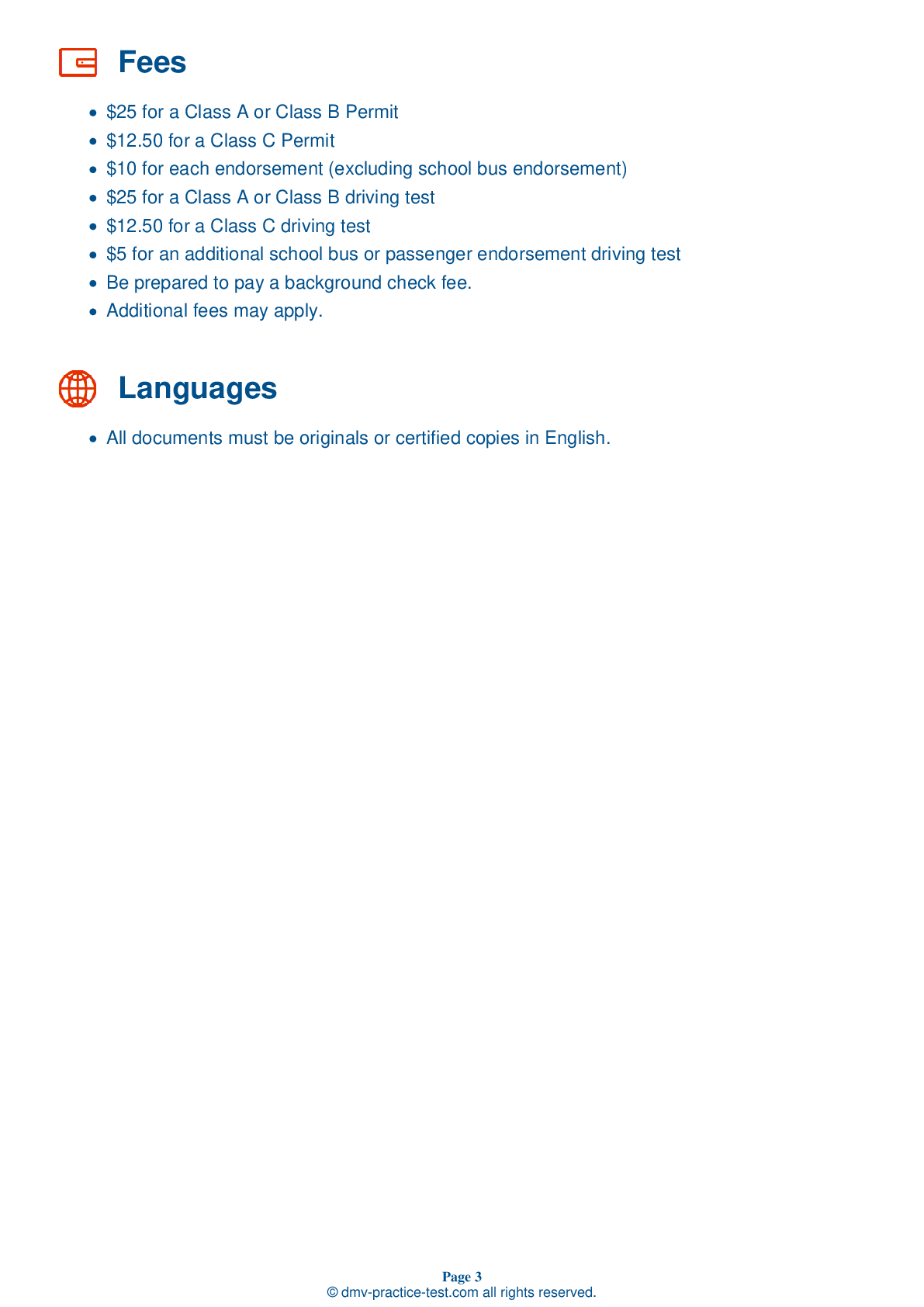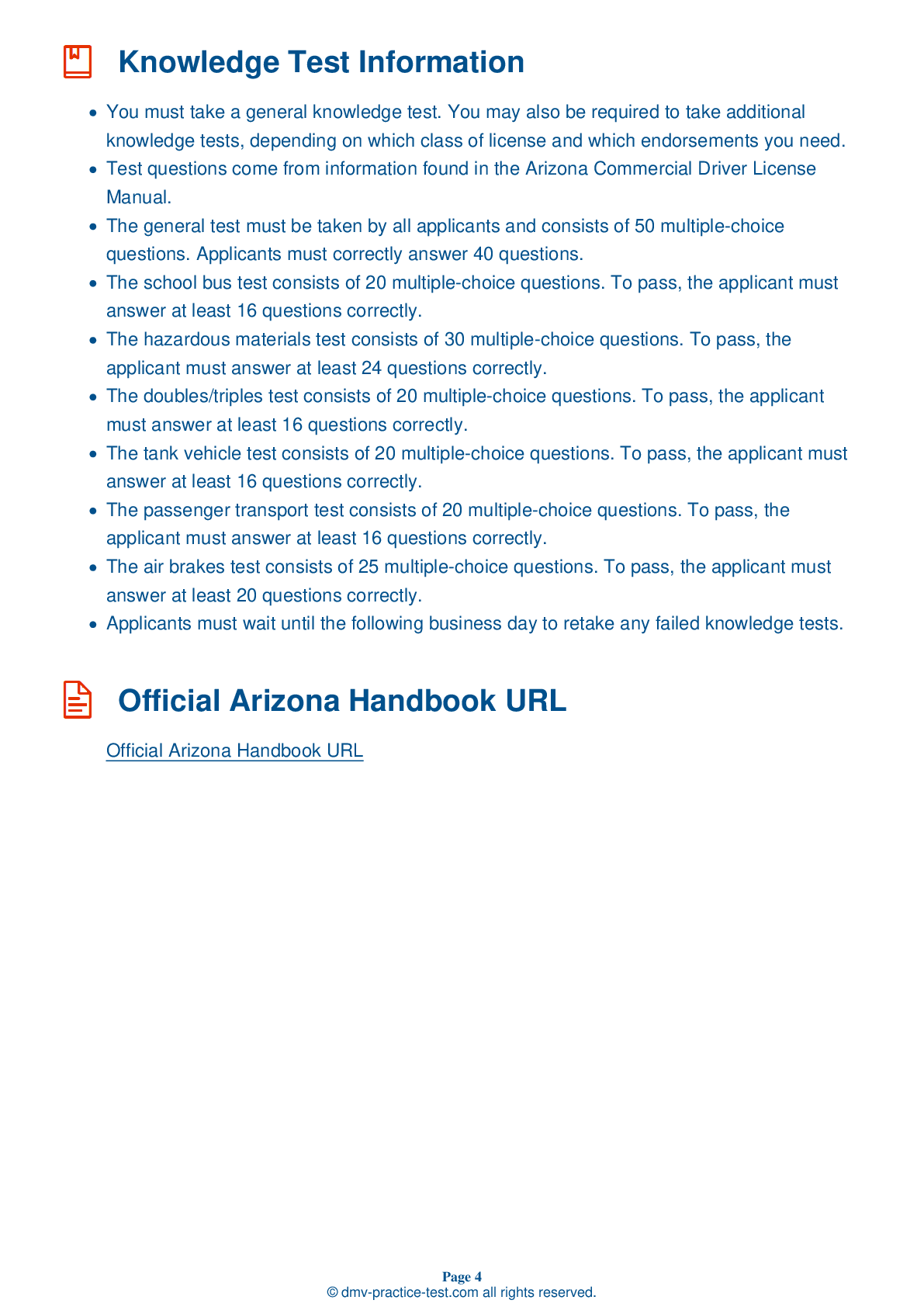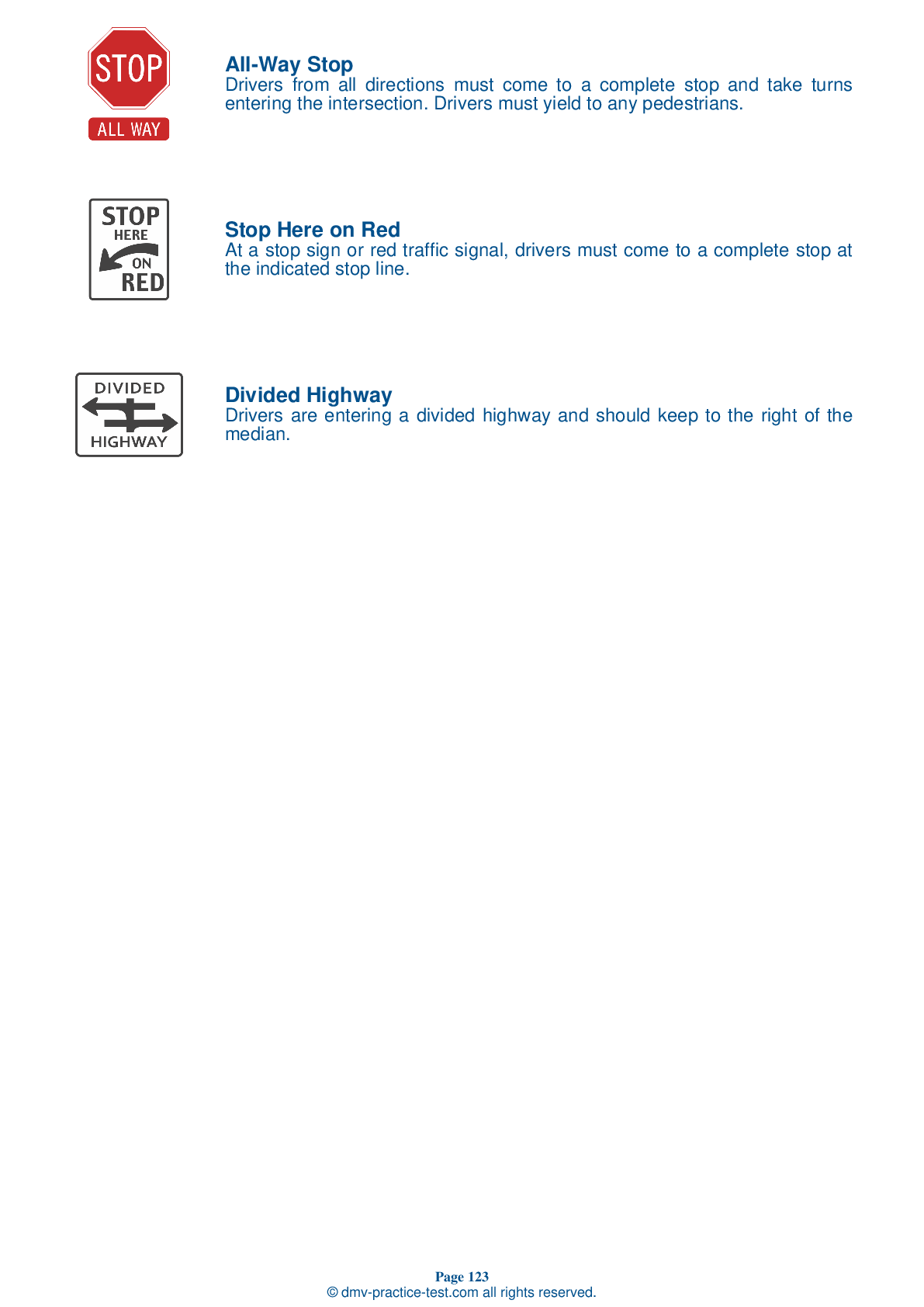Bus #1
Bus Driver Testing | Arizona 2025 #1
Train for FREE online with our AZ bus CDL test. The official exam test consists of several obligatory parts, with all of them checking your knowledge of different blocks of road rules. If you need to obtain a license in Arizona in 2025, learn how to become a bus driver and then practice as much as possible. Free sample tests published on our website will help you check and improve your knowledge and boost your grades. Please bear in mind that DMV requirements for a bus driver may vary from state to state.
20
16
20
1 . If you are stopped at a railroad crossing while operating a school bus, you should:
When stopped at a railroad crossing while operating a school bus, do not rely only on signals to tell you if a train is approaching. You should silence all passengers, open the front door, and look and listen for trains. After a train has passed, you should check for another train approaching from either direction before you proceed across the tracks.
2 . Crossover mirrors help the driver see:
Crossover mirrors are used to help a driver see the danger zone area directly in front of a school bus. The mirrors should also display the danger zone areas to the left and right sides of the bus, including the area from the front of the bus to the service door.
3 . Properly adjusted flat mirrors on a school bus should allow the driver to see ____ behind the bus.
Proper mirror adjustment is vital to the safe operation of a school bus. A bus's flat mirrors should be adjusted so the driver is able to see 200 feet, or four bus lengths, behind the bus.
4 . When approaching a school bus stop, the driver should:
A school bus driver should always approach bus stops slowly and cautiously.
5 . A bus driver approaching a bus stop should stop at least 10 feet away from waiting students because:
At a stop, a school bus should be stopped with the front bumper at least 10 feet away from the students. This forces the students to walk toward the bus, allowing the driver to keep an eye on their movements.
6 . If you must drive in reverse at a student pick-up point, you should:
Backing in a school bus is strongly discouraged and should be done only if there is no other safe way to move the vehicle. If you must drive in reverse at a student pick-up point, you should wait until all students have first loaded the bus.
7 . At a passive railroad crossing, the decision to proceed:
Railroad crossings that do not have any kind of traffic control device are known as passive crossings. The decision to proceed across tracks at a passive crossing is entirely up to the driver.
2025 Arizona | Frequently Asked Questions
A Commercial Driver's License (CDL) Class A in Arizona is a license that allows the holder to operate any combination of vehicles with a Gross Vehicle Weight Rating (GVWR) of 26,001 pounds or more, provided the towed vehicle is heavier than 10,000 pounds. It typically covers vehicles like tractor-trailers, truck and trailer combinations, and flatbeds.
A Class A CDL license in Arizona permits the holder to operate a variety of vehicles such as tractor-trailers, truck and trailer combinations, tank vehicles, livestock carriers, and flatbeds. The key criteria is that the vehicle or combination of vehicles must have a Gross Vehicle Weight Rating (GVWR) of 26,001 pounds or more, with the towed vehicle exceeding 10,000 pounds.
To obtain a Class A CDL license in Arizona, you must be at least 18 years old (21 for interstate driving), hold a valid Arizona driver's license, pass a vision exam, and successfully complete a written knowledge test. Additionally, you'll need to pass a skills test which includes a pre-trip vehicle inspection, a basic controls test, and an on-road driving exam.
In Arizona, you must be at least 18 years old to qualify for a Class A CDL license for intrastate driving (within Arizona only). However, if you plan to drive interstate (across state lines), or carry hazardous materials, you must be at least 21 years old.
Specific endorsements are not required for a Class A CDL license, but they can expand your driving opportunities. Endorsements like Hazmat (H), Tank Vehicle (N), Passenger (P), and School Bus (S) require additional tests. These endorsements allow drivers to operate special types of commercial vehicles or transport specific types of goods.
The Class A CDL skills test in Arizona encompasses three main parts. First is the pre-trip vehicle inspection, where applicants must demonstrate knowledge of the vehicle and its parts. The second part is a basic controls test, which assesses fundamental driving skills. The final part is an on-road driving exam, testing the applicant's ability to safely operate the vehicle in various traffic conditions.
Yes, there are limitations. A Class A CDL holder in Arizona can only operate vehicles they are specifically endorsed for. They must also adhere to federal hours of service regulations and maintain a logbook of their driving hours. Additionally, they cannot drive if their blood alcohol concentration is 0.04% or higher, which is stricter than the limit for non-commercial drivers.
Yes, it is possible. In Arizona, the written Class A CDL test is available in several languages besides English. However, federal regulations require that all commercial drivers demonstrate proficiency in English to ensure they can understand traffic signs, signals, law enforcement officers and emergency personnel. Therefore, you should have enough command of English for safety on the road.
Yes, you can request accommodations for the Class A CDL written test in Arizona if you have a disability. The Arizona Department of Transportation (ADOT) complies with the Americans with Disabilities Act (ADA) and provides reasonable accommodations such as providing a sign language interpreter, reader, or enlarged print. Contact ADOT's Civil Rights Office for more information.
Yes, you can retake the Class A CDL written test in Arizona if you don't pass on your first attempt. However, you must wait a minimum of one day before retaking the exam. If you fail three times, you'll need to pay a new application fee. It's recommended to study thoroughly to increase your chances of passing on the next attempt.



